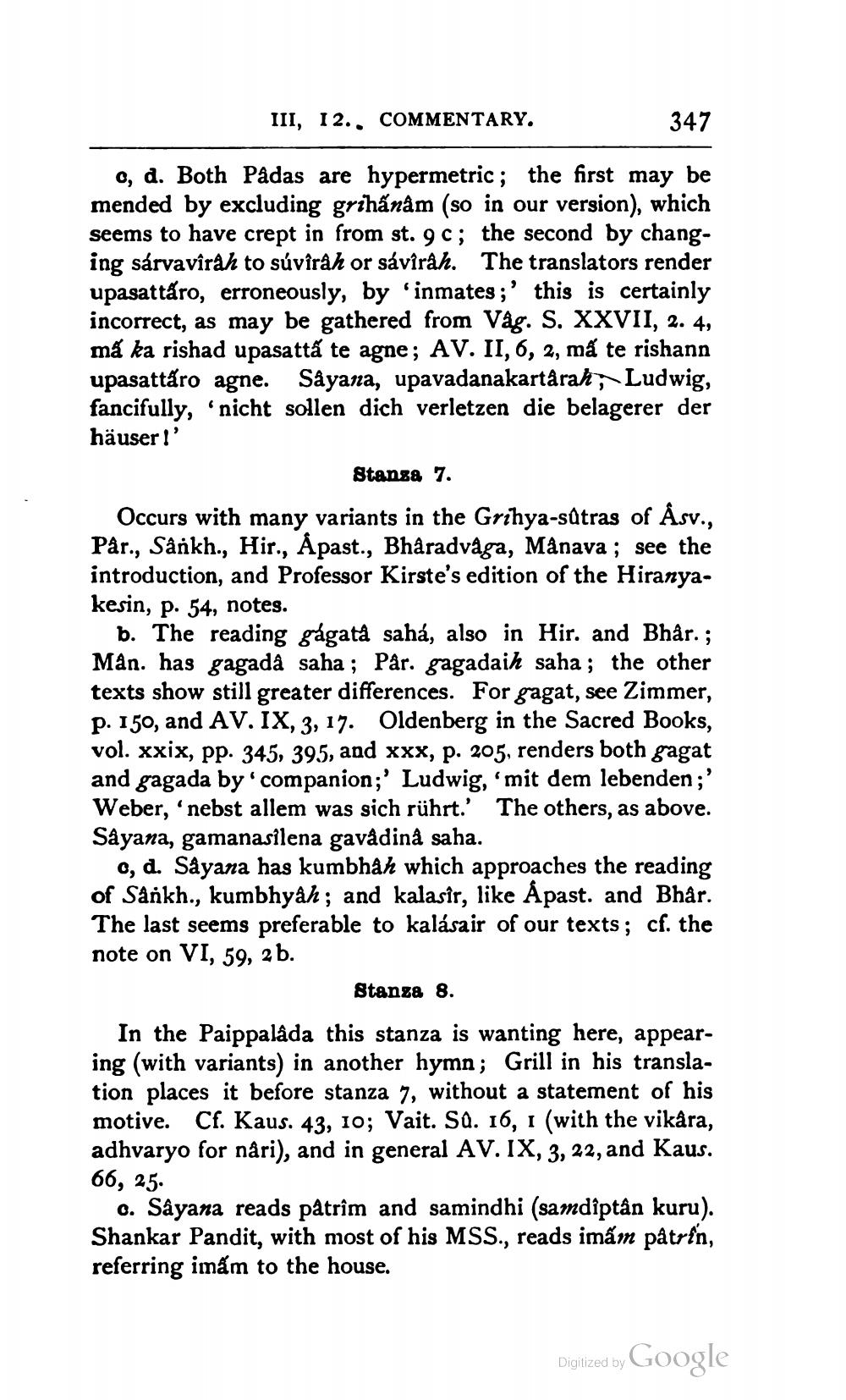________________
III, 12.. COMMENTARY.
347
0, d. Both Pådas are hypermetric; the first may be mended by excluding grihấnam (so in our version), which seems to have crept in from st. 9c; the second by changing sárvavirah to súvirâh or sávîrah. The translators render upasattaro, erroneously, by 'inmates;' this is certainly incorrect, as may be gathered from Våg. S. XXVII, 2. 4, má ka rishad upasattá te agne; AV. II, 6, 2, má te rishann upasattaro agne. Såyana, upavadanakartarak, Ludwig, fancifully, nicht sollen dich verletzen die belagerer der häuser l'
Stanga 7. Occurs with many variants in the Grihya-sútras of Åsv., Pår., Sânkh., Hir., Åpast., Bharadvága, Mänava ; see the introduction, and Professor Kirste's edition of the Hiranyakesin, p. 54, notes.
b. The reading gágatà sahá, also in Hir. and Bhår. ; Man. has gagada saha ; Pår. gagadaih saha; the other texts show still greater differences. For gagat, see Zimmer, P. 150, and AV. IX, 3, 17. Oldenberg in the Sacred Books, vol. xxix, pp. 345, 395, and xxx, p. 205, renders both gagat and gagada by companion;' Ludwig, ‘mit dem lebenden ;' Weber, 'nebst allem was sich rührt.' The others, as above. Såyana, gamanasilena gavadinå saha.
0, d. Såyana has kumbhah which approaches the reading of Sankh., kumbhyah; and kalasîr, like Apast. and Bhår. The last seems preferable to kalásair of our texts; cf. the note on VI, 59, 2 b.
Stanza 8. In the Paippalåda this stanza is wanting here, appearing (with variants) in another hymn; Grill in his translation places it before stanza 7, without a statement of his motive. Cf. Kaus. 43, 10; Vait. SQ. 16, 1 (with the vikara, adhvaryo for nåri), and in general AV. IX, 3, 22, and Kaus. 66, 25.
0. Sayana reads patrîm and samindhi (samdiptân kuru). Shankar Pandit, with most of his MSS., reads imấm påtrin, referring imấm to the house.
Digjized by Google




